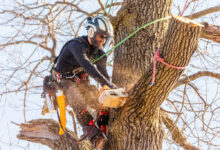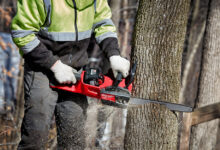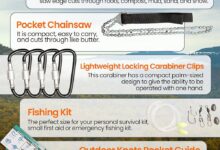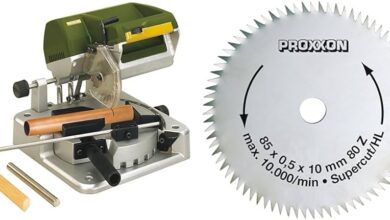Contents
- 1 Introduction: The Critical Importance of Chainsaw Safety
- 2 Subtleties of Chainsaw Safety: Understanding the Strengths and Weaknesses
- 3 FAQs on Chainsaw Safety
- 3.1 Q1: What is the most common cause of chainsaw accidents?
- 3.2 Q2: How can I prevent kickback?
- 3.3 Q3: What should I do if I encounter a kickback?
- 3.4 Q4: What type of personal protective equipment is essential for chainsaw use?
- 3.5 Q5: How often should I inspect my chainsaw?
- 3.6 Q6: Is it safe to operate a chainsaw while under the influence of alcohol or drugs?
- 3.7 Q7: What is the best way to store a chainsaw?
- 4 Conclusion: Prioritizing Safety for Responsible Chainsaw Operation
- 5 Closing Words: A Disclaimer for Personal Responsibility
Introduction: The Critical Importance of Chainsaw Safety
Chainsaws are powerful tools that can be incredibly useful in a variety of settings, from logging to construction to landscaping. However, it’s crucial to recognize that chainsaws are also inherently dangerous due to their sharp blades and high-speed cutting capabilities. Therefore, it’s imperative to prioritize chainsaw safety at all times to minimize the risk of accidents and injuries.
By following proper safety guidelines, chainsaw users can safely operate these powerful tools and protect themselves from harm. This comprehensive guide provides a detailed overview of essential chainsaw safety tips, covering key aspects such as personal protective equipment, proper handling techniques, and maintenance guidelines.
Subtleties of Chainsaw Safety: Understanding the Strengths and Weaknesses
Strengths:
1. Enhanced Efficiency and Productivity: Chainsaws offer exceptional cutting power, allowing users to complete tasks quickly and efficiently. They are particularly valuable for cutting large branches, logs, and other thick vegetation.
2. Improved Accuracy and Precision: Chainsaws provide greater precision than manual saws, enabling users to make precise cuts with minimal effort. This accuracy is crucial for specialized tasks such as tree pruning and felling.
3. Reduced Physical Exertion: Chainsaws significantly reduce the physical exertion required for cutting tasks. By using a chainsaw, individuals can conserve energy and minimize strain on their bodies.
Weaknesses:
1. Potential for Serious Injuries: Chainsaws are inherently dangerous due to their sharp blades and high cutting speed. If proper safety precautions are not taken, users risk severe injuries, including cuts, lacerations, and amputations.
2. Noise and Vibration: Chainsaws generate significant noise and vibration during operation. Prolonged exposure to these factors can cause discomfort, hearing damage, and other health problems.
3. Environmental Impact: Chainsaws contribute to air pollution and noise pollution, particularly in densely populated areas. Operators should consider the environmental impact when using chainsaws.
| Category | Specific Tips |
|---|---|
| Personal Protective Equipment (PPE) | – Wear a hard hat, eye protection, earplugs, and protective gloves. – Wear chaps or cut-resistant pants to protect legs. – Use a safety vest for added visibility and protection. |
| Handling Techniques | – Keep both hands firmly on the handles while operating the chainsaw. – Hold the saw securely and maintain a balanced stance. – Never use a chainsaw above shoulder height. – Clear the work area of obstacles and debris before starting work. |
| Maintenance and Inspection | – Inspect the chainsaw thoroughly before each use, checking for loose parts, damaged components, and proper chain tension. – Keep the chain sharpened and lubricated to ensure optimal performance and safety. – Store the chainsaw safely when not in use. |
FAQs on Chainsaw Safety
Q1: What is the most common cause of chainsaw accidents?
A1: Kickback occurs when the tip of the chainsaw contacts an object, causing the saw to jerk backward and potentially strike the operator.
Q2: How can I prevent kickback?
A2: Use a sharp chain, maintain proper tension, and avoid cutting with the tip of the chainsaw. Keep both hands firmly on the handles.
Q3: What should I do if I encounter a kickback?
A3: Release the throttle immediately, maintain a firm grip on the chainsaw, and keep your body out of the path of the saw.
Q4: What type of personal protective equipment is essential for chainsaw use?
A4: A hard hat, eye protection, earplugs, protective gloves, chaps, and a safety vest are all crucial PPE for chainsaw users.
Q5: How often should I inspect my chainsaw?
A5: Inspect your chainsaw thoroughly before each use, checking for loose parts, damaged components, and proper chain tension.
Q6: Is it safe to operate a chainsaw while under the influence of alcohol or drugs?
A6: No, it is never safe to operate a chainsaw while under the influence of alcohol or drugs, as these substances impair judgment and reaction time.
Q7: What is the best way to store a chainsaw?
A7: Store the chainsaw in a dry, secure location, away from children and pets. Keep the chain covered with a scabbard or protective cover.
Conclusion: Prioritizing Safety for Responsible Chainsaw Operation
Chainsaw safety should be the top priority for any individual operating these powerful tools. By adhering to the guidelines outlined in this comprehensive guide and understanding the potential risks associated with chainsaw use, operators can significantly reduce the likelihood of accidents and injuries.
Remember, chainsaw safety is not simply a matter of following rules but rather a mindset that prioritizes responsible operation and a commitment to personal well-being. By embracing this mindset, chainsaw users can protect themselves from harm and ensure that these valuable tools are used safely and effectively.
Always take the time to wear proper protective equipment, inspect your chainsaw regularly, and follow proper handling techniques. By adhering to these principles, you can maximize the benefits of chainsaw use while minimizing the risks.
Closing Words: A Disclaimer for Personal Responsibility
The information provided in this guide is intended to enhance chainsaw safety and promote responsible operation. However, it’s important to emphasize that the ultimate responsibility for safety lies with the individual using the chainsaw.
By following the guidelines outlined in this guide, chainsaw users can significantly reduce the likelihood of accidents, but it’s crucial to recognize that no amount of safety precautions can eliminate all risks associated with chainsaw operation.
Chainsaw users should always exercise caution, remain aware of their surroundings, and use common sense when operating these powerful tools. By doing so, they can protect themselves and others from harm and ensure that chainsaws are used responsibly and effectively.









